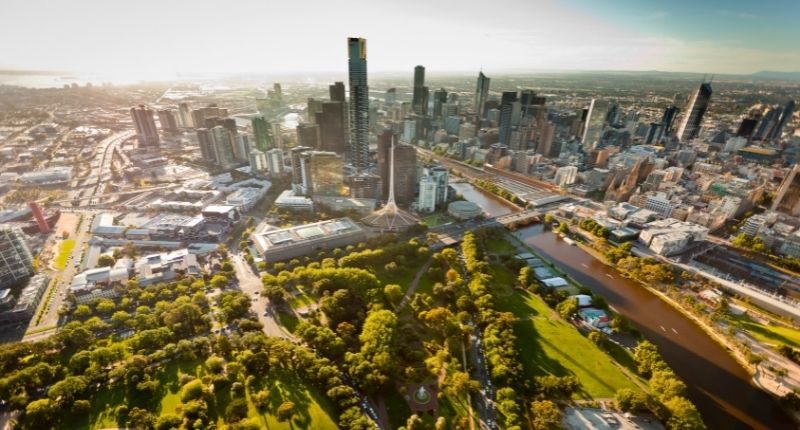- Prices rose by 25% during June 2020 and December 2021
- The median house price in Melbourne is expected to be below a million dollars to 2025
- The rental market, especially for units, is expected to rebound strongly thanks to returning overseas migrants and students
Despite prolonged lockdowns and the loss of both interstate and overseas migrants, Melbourne house prices rose by 25% between June 2020 and December 2021.
During this time, there was a strong preference shift toward detached dwellings – mainly for more space in terms of a garden and areas to work and study – with government stimuli and also low borrowing costs that fuelled the house price boom.
With most of these stimuli being wound back and ultra-low interest rates now a thing of the past, momentum in the housing market has waned.
During the June 2022 quarter, house prices fell by 2.2%, with the median price sitting at $1,050,000. Sydney is experiencing significant declines too, with much of the country forecast to do so for some time.
Melbourne House Market Outlook 2022-25
The weaker underlying demand for houses has pulled dwelling stock into oversupply, which has eased pressure on the residential sector.
With the oversupply growing, alongside interest rates, prices are expected to be dragged down.
SQM Research shows listings are lower compared last year, and significantly lower compared to the early 2010s.
Greater Melbourne
The combination of high household indebtedness and rising interest rates, with elevated construction cost growth and the oversupply of dwellings is expected to drag on new housing demand for the next three years.
According to an analysis conducted by QBE, the median house price is forecast to decline by 14% from the December 2021 peak. This will enable Canberra to potentially become the second most expensive city in Australia, after Sydney
By June 2025, the median house price in Melbourne is expected to be $995,000.
Melbourne House Price Forecast 2022-25

Outlook for the Melbourne Rental Market
With the reopening of borders, the demand for rentals has risen, especially for units.
Units, rather than houses, are the main type of dwelling targeted by investors with around 0% if units in Greater Melbourne presently rented.
During the pandemic, Melbourne’s rental market plunged, but with a significant discrepancy by geography and dwelling type. Unit rents fell 15% from the March 2020 peak. Houses, on the other hand, remained flat.
The current tightening of the Melbourne rental market is mostly occurring in the inner suburbs, where the slack has been evident. Unit rents are expected to fully recover losses sustained during the pandemic by the end of 2022.
Prices did start to ease during the June 2022 quarter and are expected to continue doing so over 2022/23 following further interest rate rises.
The median unit price in Melbourne, as of June 2022, was $649,000. With international students returning, the population growth rate of the sate is expected to bounce back to 1.5% during the 2022/23 fiscal year.
“Acute pressure in the rental market is set to be sustained by the return of overseas migration, spurring double digit growth in asking rents across inner city markets in the year ahead,” noted the QBE Housing Outlook 2022-25 report.
“Following the stabilisation of the lending environment from mid-2023, investor demand is forecast to return to growth in early 2024.”
Off the weak base, a rise in attached dwelling construction is expected to be aided by the increase in social housing as a result of the Victorian government’s Big Housing Build program and build-to-rent projects, such as Gurner and Qualitas’ $300 million St Kilda project.
After reaching a trough in late 2023, the median unit price in Melbourne is expected to reach $647,000 by June 2025.
What is the outlook for the Regional Victoria Housing Market?
While Melbourne has borne most of the brunt from falls in overseas and interstate migration, working from home and other trends have allowed the regions to continue to benefit from a break in the nexus between employment and location of home.
Although the growth of Melbourne’s population is expected to recover, its share of population increment will be lower. Bendigo, Ballarat and Geelong are all geared to record above or on-par population growth to the capital, reflecting the trend in moving to regional locations.








